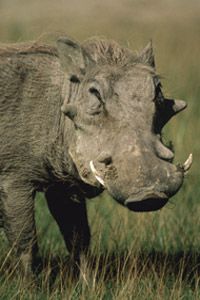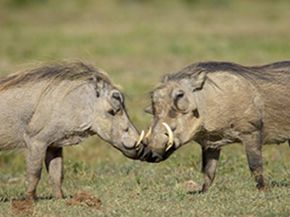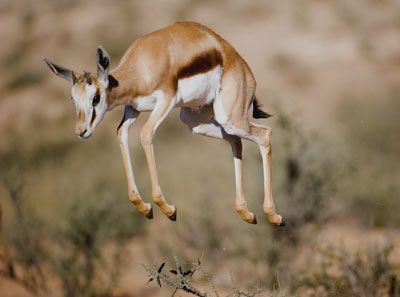Pigs and hogs might rank pretty low on the list of the world's most attractive animals. Nevertheless, you'll encounter some people who find the squealing barnyard residents appealing. But while pigs sometimes are characterized as cute, you'd be hard pressed to get anyone to say the same for warthogs.
Almost every warthog reference seems compelled to start off by mentioning the animal's haggard appearance. And indeed, these sturdy, mostly hairless creatures do make quite an impression. Upon coming across one for the first time, your eyes are initially drawn to their namesake warts protruding from each side of the head.
Advertisement
At lengths of up to 4.7 inches (12 centimeters), these facial warts garner many curious looks [source: Bothma et al]. Most people want to know why on earth warthogs have warts, because they're obviously not helping these animals win any porcine pageants. Don't judge a book by its cover though. Looks aside, warthogs are rather interesting animals.
While the curious bumps might give the animal its name, the fascinating features don't stop there. Both males and females sport two pairs of large tusks. The lower two, larger versions of canine teeth, point downward and come in handy for digging up roots, tubers and bulbs, part of the wild pig's largely diet (which occasionally includes a small animal).
Although they rarely need to brandish their toothy weapons against potential predators since they can run up to 34 mph (55 kph), the sharpness of the lower tusks makes them excellent for deterring stalkers like lions, cheetahs and hyenas [source: San Diego Zoo]. These menacing daggers can reach lengths of 6 inches (15 centimeters) [source: Kirkpatrick].
The upper pair of tusks can grow to impressive lengths of up to 2 feet (61 centimeters) [source: Kirkpatrick]. This pair curves upward in a "U" shape and is used in intraspecies fights. Though warthogs may not engage in many scuffles with other animals, come mating season, the males do get pretty feisty with each other.
Typically male warthogs, or boars, are relatively docile animals; however, they become highly competitive when eligible females are around. During mating time, boars rush at one another, ramming their heads and tusks together in an attempt to push each other to the ground and determine which animal is strongest. The weaker male usually retreats, and the winner is awarded mating rights.
Surprisingly, the boars rarely get injured during these shows of testosterone. Their secret: warts.
Advertisement



